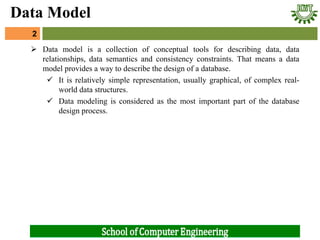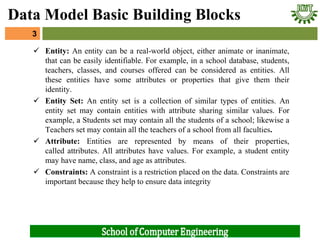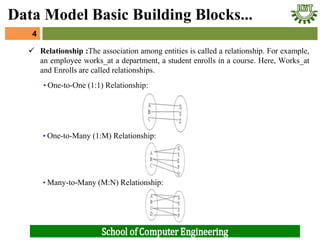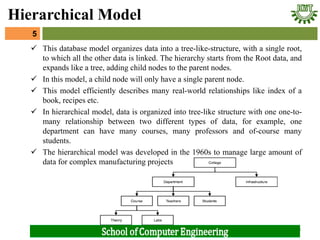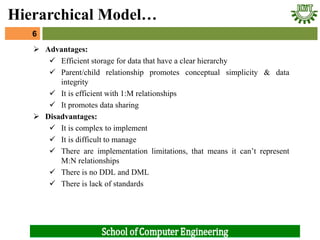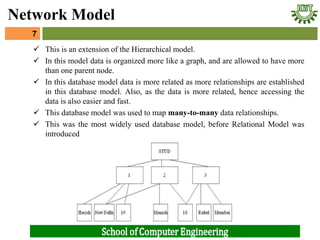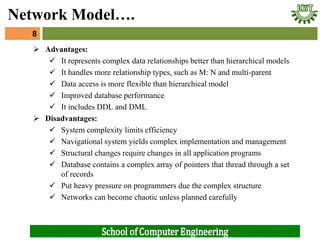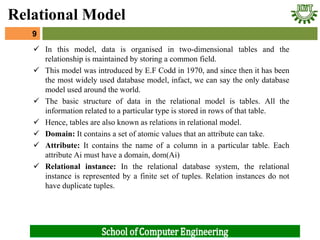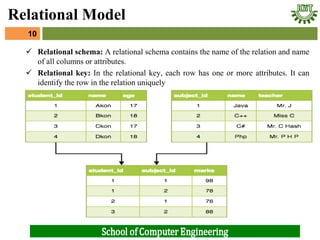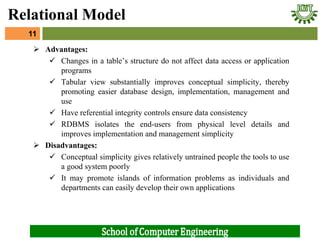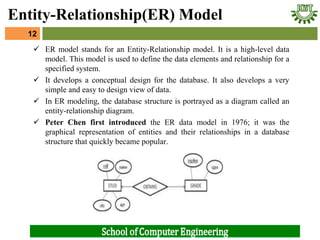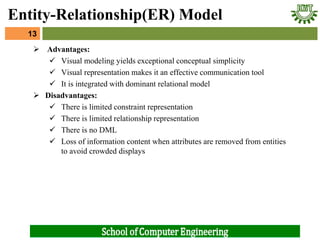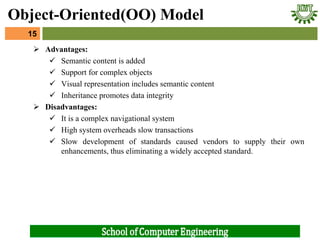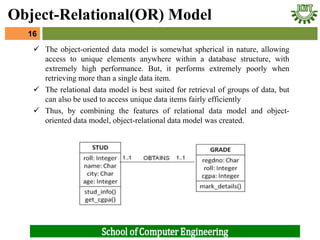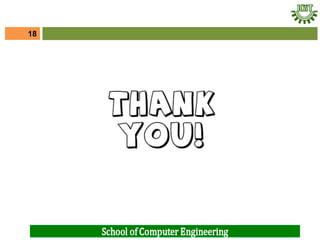This document provides an overview of different data models including the hierarchical model, network model, relational model, entity-relationship model, object-oriented model, object-relational model, and semi-structured model. It describes the key concepts and components of each model such as entities, attributes, relationships, as well as their advantages and disadvantages. The document is part of a lecture note on database management systems.
![Dr. Pradeep Kumar Mallick
Associate Professor [II]
School of Computer Engineering,
Kalinga Institute of Industrial Technology (KIIT),
Deemed to be University,Odisha
Database Management Systems (CS 2004)
KALINGA INSTITUTE OF INDUSTRIAL
TECHNOLOGY
School Of Computer
Engineering
4 Credit Lecture Note 02](https://image.slidesharecdn.com/dbms-2-221101032839-37103ada/85/DBMS-2-pptx-1-320.jpg)
